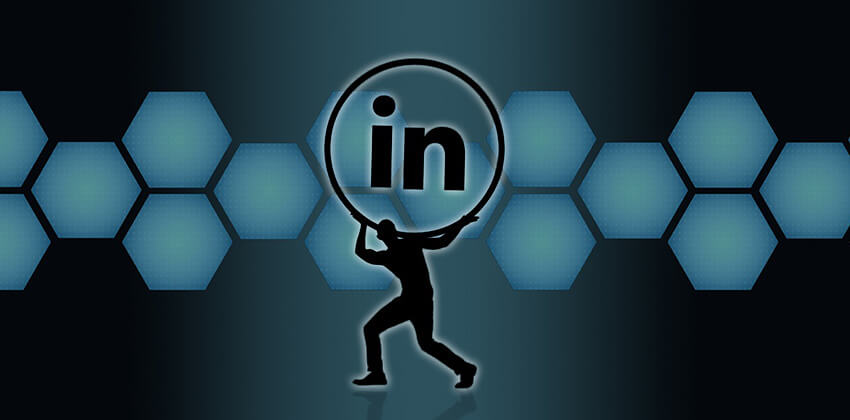
Do you remember those open-book tests you took in middle school? Your aim, of course, was to get a good grade. The teacher’s aim was to use them as a means to get you to master the material.
Now, think of LinkedIn as that open book. Your aim is to use LinkedIn to find a job that will advance your career. An employer’s purpose in using LinkedIn is to find the most desirable candidate to fulfill a crucial role in his or her company.
The Employer’s Goal
When you step back from your own situation and view things from the employer’s perspective, you’ll actually find yourself using LinkedIn in a different way that will give you the highest probability of job-hunting success.
Companies have as much angst as you do about the hiring process.
They are afraid of getting it wrong by hiring someone who isn’t the right fit, doesn’t have all the skills s/he claims, or otherwise doesn’t work out.
LinkedIn works to help employers easily identify job candidates who may become “good hires.”
New LinkedIn Tools for Employers
When recruiters and HR staffing specialists are searching for candidates, they use all the tricks of their trade to find stellar candidates. They use keywords to identify people with specific successes. They use an array of multiple filters. And they have other tools at their disposal about which most job seekers have never heard.
Any company of size is likely to pay for an expensive recruiting LinkedIn package that adds features geared to help them to find and manage a quality talent pool. Some levels of the recruiter subscriptions allow a company to view literally every single bit of data on every profile on LinkedIn. With somewhere around 400 million profiles on the platform, that is a huge amount of data to sift, sort, segregate, and analyze!
Moreover, HR staff and recruiters can plot out relationships, funnel profiles into various user-defined folders, and mail merge personalized emails out to any number of potentially interesting contacts.
And now, LinkedIn is in the midst of rolling out brand new capabilities to corporate recruiters. If you are looking for a job, you need to be familiar with these tools in order to position yourself to be found.
Advertisement
LinkedIn’s “Referral” Program
You’ve probably heard of employee referral programs, where a company will reward its own employees for bringing to its attention high quality candidates who eventually get hired. It is a great tool, but often employees are so busy with their own jobs they don’t bother to give any thought to who else they would like to bring into their company.
Enter LI’s Referral Program that puts this whole process on steroids. With this feature, LinkedIn enables in-house recruiters to learn to whom all current employees are connected, and search among this pool for potential candidates of interest. Then, HR can ask for specific referrals from company employees.
Everything is tracked. And companies will be able to truly capitalize on their own employees’ contacts. Wouldn’t you like to be found that way?
LinkedIn’s Talent “Spotlights”
There is yet another LinkedIn search revolution in the works, and it is rolling out very soon. Up to this point, employers would conduct search for people on LinkedIn pretty much the same way you do, except they have more filters that they can apply to precisely target their queries.
Now, rather than doing complex queries, an employer will be able to identify one or two stellar LinkedIn profiles (perhaps of the person who currently holds a job or someone like him in a different company) and then LI’s artificial intelligence will quickly return those profiles that most closely match the entirety of the already identified “best fit” profile. These are called “Spotlights.”
So, what are the implications for job hunters? Immense!
How Job Seekers Can Leverage Referrals and Spotlights
Here are four things you should do:
1.Make your Profile complete and robust, adding your accomplishments.
If you have just a basic profile without much information, you are likely dooming yourself to oblivion. Make certain that you go above and beyond just listing your current and past employers and roles to include relevant accomplishments. Then flesh out your profile to include up to 50 key skills that are needed (and which you have) for roles appropriate for your career advancement.
[More: Read Choosing the Best Keywords for Your LinkedIn Profile to determine the most appropriate keywords for your Profile.]
2.Research your competitors.
Do your own search for people who currently have the jobs you are most interested in filling, and to the full extent possible, mimic them. Present yourself as the person who is doing what needs to be done whenever it is honest to do so.
Match up your skills to theirs, your accomplishments to theirs and so on. Make yourself look like the person who has the job you seek, without misrepresenting yourself or copying someone else’s Profile (because no one is exactly like you!).
[More: Read How to Leverage Your LinkedIn Competitors for a 5-step process to find your competitors.]
3.Leverage LinkedIn Groups and Updates.
Join the same LinkedIn groups as the people who hold the jobs you seek belong to. Look at the updates those people post, and post similar things that show yourself to be like them.
4.Focus on your target employers.
Make certain to network and get connections in your target companies. That way, you will show up as a connection for LinkedIn’s recruiters referral search. And if you have an interesting profile, someone from that company is likely to reach out to you.
Happy hunting!
More About LinkedIn for Job Search:
- 12 Steps to Outrank Your Competitors in LinkedIn Search in 2020 (Personal LinkedIn SEO)
- 7 Ways to Attract Recruiters on LinkedIn
- How to Connect with the Right Recruiters on LinkedIn
- How to Be Found by Recruiters on LinkedIn (from the Working with Recruiters column)
Happy hunting!
About the author…
Job-Hunt’s Social Media and Job Search Expert Arnie Fertig, MPA, works with clients throughout the U.S. who are dedicated to their own career advancement on the nuts and bolts of job hunting. He is the Head Coach at Jobhuntercoach.com, and contributes weekly to the USNews & World Report “On Careers” Blog. Connect with him on LinkedIn, on Twitter (@jobhuntercoach), or directly: Fertig [at] jobhuntercoach.com.
Don't forget to share this article with friends!




